
The Premier League is the most watched sports league in the world and commands staggering viewing figures from over 212 territories. It’s seen as the pinnacle of football within England and is widely regarded as one of the biggest and most exciting leagues across Europe.
The Premier League is actually its own corporation, governed separately from the FA and the rest of the English Football League (EFL). The teams that are taking part in the league for the upcoming season each get a share of any money coming in form TV rights and advertising. This division of income means the league is extremely competitive and one of the reasons for its huge popularity.
Premier League Winners By Year
| Season | Winner | Points | Scored | Conceded | Runner-Up (Points) |
|---|---|---|---|---|---|
| 2022–23 | Manchester City | 89 | 94 | 33 | Arsenal (84) |
| 2021–22 | Manchester City | 93 | 99 | 26 | Liverpool (92) |
| 2020–21 | Manchester City | 86 | 83 | 32 | Manchester United (74) |
| 2019–20 | Liverpool | 99 | 85 | 33 | Manchester City (81) |
| 2018–19 | Manchester City | 98 | 95 | 23 | Liverpool (97) |
| 2017–18 | Manchester City | 100 | 106 | 27 | Manchester United (81) |
| 2016–17 | Chelsea | 93 | 85 | 33 | Tottenham Hotspur (86) |
| 2015–16 | Leicester City | 81 | 68 | 36 | Arsenal (71) |
| 2014–15 | Chelsea | 87 | 73 | 32 | Manchester City (79) |
| 2013–14 | Manchester City | 86 | 102 | 37 | Liverpool (84) |
| 2012–13 | Manchester United | 89 | 86 | 43 | Manchester City (78) |
| 2011–12 | Manchester City | 89 | 93 | 29 | Manchester United (89) |
| 2010–11 | Manchester United | 80 | 78 | 37 | Chelsea (71) |
| 2009–10 | Chelsea | 86 | 103 | 32 | Manchester United (85) |
| 2008–09 | Manchester United | 90 | 68 | 24 | Liverpool (86) |
| 2007–08 | Manchester United | 87 | 80 | 22 | Chelsea (85) |
| 2006–07 | Manchester United | 89 | 83 | 27 | Chelsea (83) |
| 2005–06 | Chelsea | 91 | 72 | 22 | Manchester United (83) |
| 2004–05 | Chelsea | 95 | 72 | 15 | Arsenal (83) |
| 2003–04 | Arsenal | 90 | 73 | 26 | Chelsea (79) |
| 2002–03 | Manchester United | 83 | 74 | 34 | Arsenal (78) |
| 2001–02 | Arsenal | 87 | 79 | 36 | Liverpool (80) |
| 2000–01 | Manchester United | 80 | 79 | 31 | Arsenal (70) |
| 1999–00 | Manchester United | 91 | 97 | 45 | Arsenal (73) |
| 1998–99 | Manchester United | 79 | 80 | 37 | Arsenal (78) |
| 1997–98 | Arsenal | 78 | 68 | 33 | Manchester United (77) |
| 1996–97 | Manchester United | 75 | 76 | 44 | Newcastle United (68) |
| 1995–96 | Manchester United | 82 | 73 | 35 | Newcastle United (78) |
| 1994–95 | Blackburn Rovers | 89 | 80 | 39 | Manchester United (88) |
| 1993–94 | Manchester United | 92 | 80 | 38 | Blackburn Rovers (84) |
| 1992–93 | Manchester United | 84 | 67 | 31 | Aston Villa (74) |
Season Format
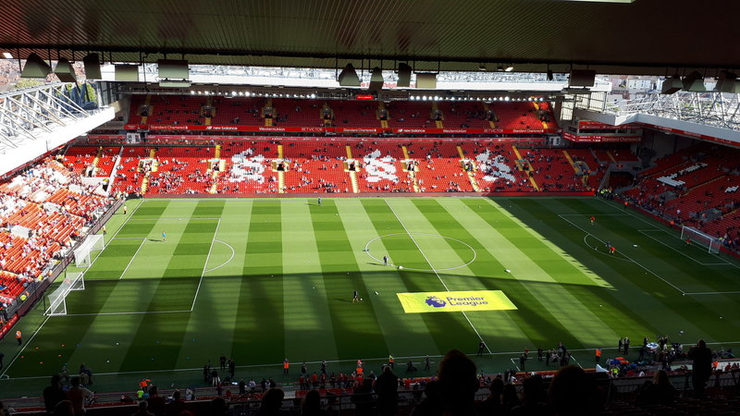
The Premier League season starts in August and runs through to May. There are 20 teams that compete and each team plays each other twice, both home and away. The start of the Premier League in 1992 actually included 22 teams, but this number was reduced to 20 in 1995, and this is where they currently sit.
In total, there are 38 games throughout a season and each game will earn teams 3 points for a win, 1 point a piece for a draw and zero points for a loss. The team with the most points at the end of the season will be crowned champions. If two or more teams are tied on the same number of points it will then go down to goal difference, goals scored and then head to head records.
Premier League on TV

The television rights are a major factor in the Premier League, mainly because of how much money they bring, more of which we will discuss later in this article. There are three parties within the UK that buy the rights, being Sky, BT Sport and Amazon.
Sky have the lion’s share of the games, with 128 being showing over the course of the season, working out at roughly 3 games per week during the season. BT have the rights for 52 games, usually the midday or late kick offs on a Saturday with Amazon showing 20 Bank Holiday and midweek features.
The games are essentially put up as an auction before the start of the season and then the company with the largest bids get the highest number of games to cover. The distribution of games that are shown on TV are usually reflective of how successful the club is or how popular their team is in terms of potential viewing figures. Most teams will get a minimum of 10 games shown live with the most during the 2020/21 season being Chelsea with 30.
Festive Football

Christmas time is often when the highest number of games are played within any given period. This is usually down to the fact that most teams play on Boxing Day and New Year’s Day. Depending on what day of these fall on each year will often determine the time off between games. It’s not uncommon for teams to play 3 matches within 5-7 days over Christmas.
Christmas is a pivotal time of year, with plenty of points up for grabs. Most teams will look to do as well as they can over this period before kicking on for the second half of the season. One of the more poignant stats is that only 3 teams who have been bottom at Christmas have manage to stay up over the 30 years the Premier League has been running.
European Places
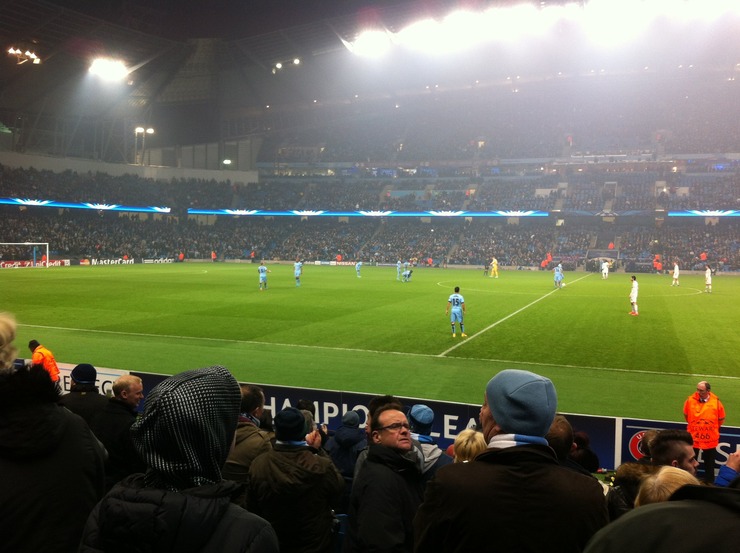
With each season, the European qualification process will be determined on where each team finishes within the league. The top four spots are selected for Champions League qualification, with the top three automatically qualifying for the tournament proper and 4th place playing in a qualifying match to qualify.
The Europa League and Europa Conference League positions are a little more complicated to work out. Essentially three spots are given, two for the Europa League and one for the Europa Conference League. They are the team that finishes 5th in the league and the winners of the FA Cup for the Europa League and the winners of the League Cup for the Europa Conference League.
But, if the team that wins the FA Cup finish within the top 5 spots then the team that finished 6th in the league will be awarded the Europa League position assuming they haven’t already qualified. If the team who win the League Cup are ranked within the top 5 or top 6 with the condition above, then the team who finish 7th in the League will qualify for the Europa Conference League.
Premier League European Qualifiers: 2020/21 – 2022/23
| Competition | 2022/23 | 2021/22 | 2020/21 |
|---|---|---|---|
| Champions League | Manchester City | Manchester City | Manchester City |
| Champions League | Arsenal | Liverpool | Manchester United |
| Champions League | Manchester United | Chelsea | Liverpool |
| Champions League | Newcastle United | Tottenham Hotspur | Chelsea |
| Europa League | Liverpool | Arsenal | Leicester City |
| Europa League | Brighton | Manchester United | West Ham United |
| Europa League | West Ham | – | – |
| Europa Conference League | Aston Villa | West Ham United | – |
The number of spots that are allocated by UEFA does have the potential to change however. Basically, each of the top-flight leagues around Europe are given a certain number of points that give them more or less access depending on those points.
The points are awarded on how teams from within league have performed in previous years competitions. The points are based on a five-year period and as England are currently ranked 1st in the UEFA association club coefficient rankings (catchy name, right!), this means that the above allocation is awarded. If they were to fall down in the rankings then the number of entrants or the method in which they would need to qualify (extra qualifying stages) would be implemented.
Relegation
Within the league there will be three teams that are relegated each season and in turn, three teams that get promoted from the Championship. The three teams that go down will be in 18th, 19th and 20th position, whether that be on the fewest points or having to take goals difference, goals scored or head to head results as a factor. The three teams that come up will consist of 1st and 2nd place in the Championship and then the winner of the play offs, contain teams from 3rd to 6th position who play off in a semi-final (two legs) and final.
Premier League Relegation: 2012/13 – 2022/23
| Season | 18th Position | 19th Position | 20th Position |
|---|---|---|---|
| 2022/23 | Leicester City | Leeds United | Southampton |
| 2021/22 | Burnley | Watford | Norwich City |
| 2020/21 | Fulham | West Bromwich Albion | Sheffield United |
| 2019/20 | Bournemouth | Watford | Norwich City |
| 2018/19 | Cardiff City | Fulham | Huddersfield Town |
| 2017/18 | Swansea City | Stoke City | West Bromwich Albion |
| 2016/17 | Hull City | Middlesbrough | Sunderland |
| 2015/16 | Newcastle United | Norwich City | Aston Villa |
| 2014/15 | Hull City | Burnley | Queens Park Rangers |
| 2013/14 | Norwich City | Fulham | Cardiff City |
| 2012/13 | Wigan Athletic | Reading | Queens Park Rangers |
Teams often think of the 40-point mark as being enough to pretty much guarantee safety. Only one team, West Ham 2002/3 season, has been relegated with more than 40 points since the league switched to 20 teams, going down with 42. Mathematically though, based on all the figures throughout the Premier League history, 37 points is the magic number that swings the implied odds (57.9%) into the favour of a team staying up or down.
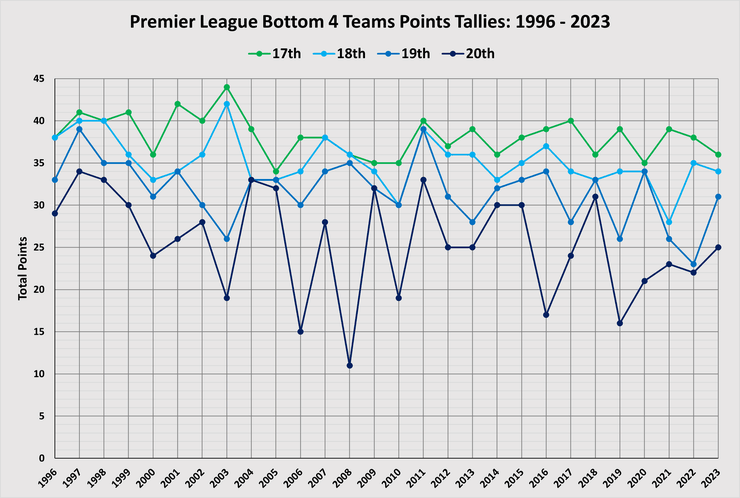
Money
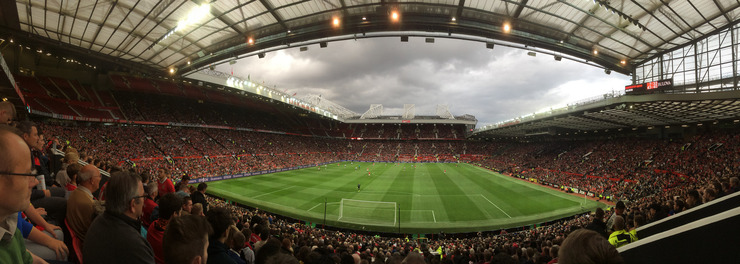
It’s little secret that the Premier League is now a multi billion pound enterprise. The numbers that are involved these days are quite staggering and a stark contrast to what the winners and losers received in the opening season back in 1993.
The vast majority of the money comes from TV rights, both domestically and overseas. The 2016/17 will go on record as the most lucrative in the history of the competition, with a reported £8 billion being distributed over the next three seasons. There are parts of the budget that are equally distributed to all teams and then parts that are performance based, i.e. where a team finishes in the league.
The first season in 1993 had a dividend of ‘just’ £35 million, of which each team in the league got a percentage of the deal. As the league gained popularity both domestically and around the world, a steady growth took place up until 1998 where the first real jump occurred, taking the money to over £138 million.
Again, the coming years saw steady growth and by 2005 £404 million was up for grabs in prize money. The first major jump occurred in 2008, where the figure rose by almost £300 million from the previous year to £767 million. 2014 was the first year of the ‘billion dollar’ Premier League era, offering up over £1.5 billion in prize money a jump of £600 million from the previous season.
The 2016/17 was the next major jump and now sits at £2.9 billion distributed in prize money. To highlight just how much the increase in money affected each club, Chelsea who won the league in 2016/17 earned over £50 million more than Leicester City who won the league the previous year, amassing a staggering £151 million compared to Leicester £100 million.
The prize money is now split up based on a number of factors that include equal share of domestic and overseas money, central commercial money, merit money based on league position and facility fees. For example, below is a breakdown of the Premier League’s payments in terms of prize money from the 2021/22 season.
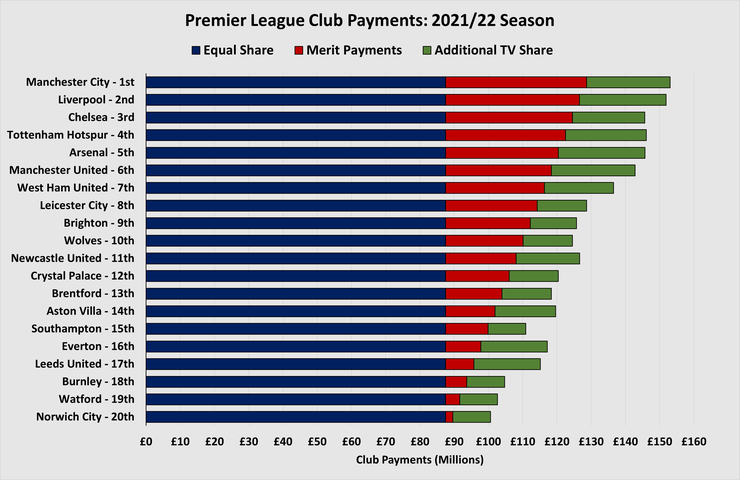
As you can see, the Champions Manchester City received over £150 million. But, even Norwich City who finished last that season and got relegated received over £100 million for doing so. What’s also pretty interesting is that teams can actually earn more than those above if they are on TV more therefore earning a higher share.
Probably the most staggering aspect of these quite ridiculous numbers is that the Premier League is the highest earning league in the world. The Champions of La Liga in Spain bagged around £12 million less than that of the English Champions in the 2017/18 season, with the winners picking up around £138 million versus £150 million.
These two leagues are miles ahead of any league or tournament though. As a comparison, below we have listed the prize money for the winner’s of Europe’s biggest five leagues for the 2017/18 season.

Television Expenditure
Sky have been at the forefront of any deals brokered with the Premier League for TV rights and since the start of the first season in 1992, they’ve been able to show at least 60 games per season. But, over the last 25 years or so they have had to combat with increasing competition, mainly from the likes of Setanta, ESPN and, most recently, BT Sport and Amazon. Below we have listed the value of each TV and who were involved.
Premier League Domestic Television Rights
| Years | Value | Broadcaster (Live Games) |
|---|---|---|
| 1992 – 1997 | £304 million | Sky Sports (60) |
| 1997 – 2001 | £670 million | Sky Sports (60) |
| 2001 – 2004 | £1.024 billion | Sky Sports (110) |
| 2004 – 2007 | £1.3 billion | Sky Sports (138) |
| 2007 – 2009 | £1.7 billion | Sky Sports (96) & Setanta (42) |
| 2009 – 2013 | £1.7 billion | Sky Sports (115) & ESPN (23) |
| 2013 – 2016 | £3.08 billion | Sky Sports (115) & BT Sport (38) |
| 2016 – 2019 | £5.136 billion | Sky Sports (126) & BT Sport (42) |
| 2019 – 2022 | £4.64 billion (est) | Sky Sports (128), BT Sport (52), Amazon (20) |
| 2022 – 2025 | £5.10 billion (est) | Sky Sports (128), TNT/BT Sport (52), Amazon (20) |
Whilst the Premier League has always seen steady growth over the years and even defied economic slumps, it must be said that the last two packages that have been tabled from both Sky Sport and BT Sport have taken the money to a whole new level. As interest in the Premier League continues to rise, we can only speculate that these numbers will keep growing and likely at an alarming rate.
Transfers

The transfer window is one of the most controversial aspects of the Premier League. It’s essentially a period of time in which clubs are allowed to sign or sell players.
In England, there are two windows, with the first starting from the 9th June running originally through to the 31st August. In 2017 the Premier League clubs voted to change this so that from the start of the 2018/19 campaign, the summer window would close at 5pm the day before the first match of the season. The second window runs from the 1st January to the 31st of January. All leagues that governed by FIFA will have a maximum of 12 weeks over the summer and 4 weeks over the winter period, with times varying ever so slightly.
In 2020, the summer transfer window ran from the 27th July to the 5th October due to the suspension and delayed end to the 2019/20 season.
The whole concept of the window that was introduced in the 2002/03 season was to prevent clubs and agents from doing business during the league campaign and potentially disrupting teams mid-season. It was decided that to allow clubs to get players to settle and to focus on the football rather than big money transfers that the window would eliminate this, which is true for the most part.
The window has actually brought a fair amount of excitement to the Premier League as clubs, players and fans alike know that there is a very limited period in which they can strengthen throughout a season. As this is the case, it’s been one of the driving factors to phenomenal increase in transfer prices with clubs that are selling knowing that the buyer is needs to get a deal done in a short period of time. TV companies such as Sky Sports run massive features and invest a huge amount of time to covering the transfer window.
Some of the biggest deals to have taken place on deadline day have included the sale of Fernando Torres from Liverpool to Chelsea for £50 million, Mesut Ozil from Real Madrid to Arsenal for £42.5 million and Anthony Martial from Monaco to Manchester United for £36 million. Below is a list of the top transfer fees paid by Premier League clubs up to and including the 2022/23 season.
Premier League Most Expensive Transfer Fees Paid
| Player | Fee (£m) | Year | From | To |
|---|---|---|---|---|
| Enzo Fernandez | 106.8 | 2023 (Jan) | Benfica | Chelsea |
| Jack Grealish | 100 | 2021 (Aug) | Aston Villa | Manchester City |
| Romelu Lukaku | 97.5 | 2021 (Aug) | Inter Milan | Chelsea |
| Paul Pogba | 89 | 2016 (Aug) | Juventus | Manchester United |
| Antony | 80.75 | 2022 (Aug) | Ajax | Manchester United |
| Harry Maguire | 80 | 2019 (Aug) | Leicester City | Manchester United |
| Wesley Fofana | 75 | 2022 (Aug) | Leicester City | Chelsea |
| Virgil van Dijk | 75 | 2018 (Jan) | Southampton | Liverpool |
| Romelu Lukaku | 75 | 2017 (Jul) | Everton | Manchester United |
| Jadon Sancho | 73 | 2021 (July) | Borussia Dortmund | Manchester United |
| Kai Havertz | 72 | 2020 (Sept) | Bayer Leverkusen | Chelsea |
| Nicolas Pepe | 72 | 2019 (Aug) | Lille | Arsenal |
| Kepa Arrizabalaga | 72 | 2018 (Aug) | Athletic Bilbao | Chelsea |
| Alisson Becker | 67 | 2018 (July) | Roma | Liverpool |
| Rodri | 63 | 2019 (July) | Atletico Madrid | Manchester City |
| Ruben Dias | 62 | 2020 (Sept) | Benfica | Manchester City |
| Joao Cancelo | 60 | 2019 (Aug) | Juventus | Manchester City |
| Riyad Mahrez | 60 | 2018 (July) | Leicester City | Manchester City |
| Pierre-Emerick Aubameyang | 60 | 2018 (Jan) | Borussia Dortmund | Arsenal |
| Angel Di Maria | 60 | 2014 (Aug) | Real Madrid | Manchester United |
Player Wages

The biggest outlay for pretty much any Premier League club is that of player wages. As the vast sums of money for TV rights increases, it means that clubs are able to plough more money into other aspects of the club, with the biggest drain coming from that of the players.
The increase in wages since the start of the Premier League has been astronomical and it’s not uncommon to see players on £200,000 per week or even more. These wages have led to many fans becoming disillusioned with the Premier League and other top leagues, such is the gulf in wages between even that and the Championship, let alone lower league teams.
But, it is what is and it’s through no fault of the players that teams are willing to pay these vast sums. From the 2016/17 season, players on average received a whopping £2.4 million per year, working out at over £46,000 per week.
This number is offset slightly given the vast sums of money the teams at the top of the league pay out compared to the bottom. For example, in the same season Manchester United were top spenders with an average weekly wage of £110,000, whilst Burnley were the lowest spenders averaging just £18,000.
As crazy as these numbers are, this isn’t the only income for the majority players. It’s possible that some of them are able to earn just as much through sponsorship and boot deals as they are from their club. Wayne Rooney had been a leading light in the Premier League in terms of sponsorship adding a cool £5 million per year from a host of sponsors, including Nike, taking is total yearly salary to over £18 million.
To rank sponsorship deals into some sort of perspective, Forbes regularly conduct studies of the world’s top 20 best paid football players and highlighted that over £350 million came from salary and a further £120 million came from sponsorship deals.
Below is a list of the top 10 salaries in the Premier League as of the 2022/23 season.
Premier League’s Top Earning Players (2022/23)
| Player | Club | Weekly Wage | Annual Wage |
|---|---|---|---|
| Kevin De Bruyne | Manchester City | £400,000 | £20.8 million |
| Erling Haaland | Manchester City | £375,000 | £19.5 million |
| David De Gea | Manchester United | £375,000 | £19.5 million |
| Jadon Sancho | Manchester United | £350,000 | £18.2 million |
| Raphael Varane | Manchester United | £340,000 | £17.7 million |
| Raheem Sterling | Chelsea | £325,000 | £16.9 million |
| Romelu Lukaku | Chelsea | £325,000 | £16.9 million |
| Enzo Fernandez | Chelsea | £315,000 | £16.4 million |
| Kai Havertz | Chelsea | £310,000 | £16.1 million |
| Jack Grealish | Manchester City | £300,000 | £15.6 million |
| Casimiro | Manchester United | £300,000 | £15.6 million |
Sponsorship

We mentioned above about players being able to take out lucrative sponsorship deals, but the clubs are also massive benefactors to sponsorship as well. These days everything from shirts, stadiums, bill boards, stands, programmes, betting partners and even shirt sleeves are all saleable for the right price. The level of exposure that the clubs get not just nationally, but also internationally means that these brands are able to pitch to massive global audiences and in return, they pay top dollar.
The most common and probably most lucrative for the club is that of the shirt sponsor and the kit manufacturer. The likes of Nike and Adidas have a pretty large monopoly over the Premier League teams at the minute, but smaller brands such as New Balance, Puma, Under Armour and Umbro are both staking a claim as well.
The amount a club can make depends on how successful they are or how marketable they are. Throughout the 2017/18 season news outlet Sporting Intelligence has revealed that sponsorship deals for this season will be worth a staggering £281.8 million across the board.
The highest paid club currently are Manchester City who have a deal with Etihad Airways thought to be worth £67.5 million per year. This beat Manchester United’s sponsorship arrangement with Team Viewer at around £47 million per year. It’s worth bearing in mind that these deals are often over several years, so will be worth hundreds of millions to these clubs.
The lower teams in the league often have to suffice with much smaller deals. For example, Brighton secured a £100 million deal over 12 years with American Express.
One of the latest introductions of sponsorship to clubs is by having an official betting partner. This usually allows the bookmaker to exclusively take bets within each of the stadiums and gives them higher priority on bets and access than their rivals. Clubs have also introduced a sleeve sponsor, with top clubs earning £10 million per annum from this addition.
Below is a list of the top five Premier League deals based on their main annual sponsorship income.
Most Valuable Premier League Sponsorship Deals – 2021/22
| Club | Shirt | Sleeve | Kit Manufacturer | Total |
|---|---|---|---|---|
| Manchester City | Etihad Airways (£67.5m) | Nexen Tire (£10m) | Puma (£65m) | £142.5m |
| Manchester United | Team Viewer (£47m) | Kohler (£10m) | Adidas (£75m) | £132m |
| Liverpool | Standard Chartered (£40m) | Expedia (£10m) | Nike (£70m) | £120m |
| Arsenal | Emirates (£40m) | Visit Rwanda (£10m) | Adidas (£65m) | £115m |
| Chelsea | Three (£40m) | Hyundai (£10m) | Nike (£60m) | £110m |
| Tottenham Hotspur | AIA (£40m) | Cinch (£10m) | Nike (£30m) | £80m |
Statistics
Most Successful Teams
One of the most interesting facts about the Premier League is that since it started back in 1992 there have been 50 teams that have competed, yet only 7 teams have managed to win the title. Baring Liverpool in 2019/20, Leicester City who won the league in 2015/16 season and Blackburn Rovers who won the 1994/95 season, only Arsenal, Chelsea, Manchester United and Manchester City have won the league.
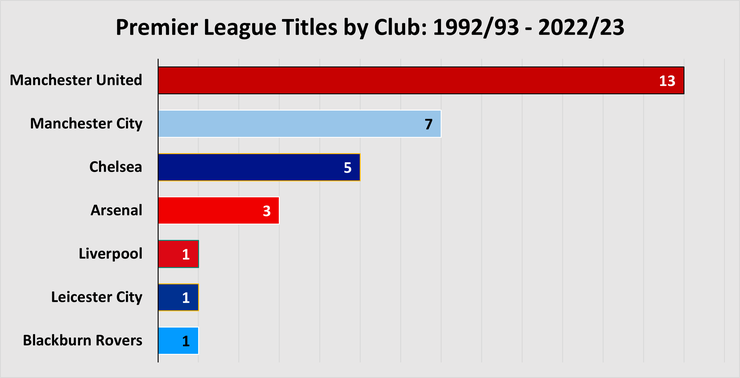
Manchester United are by far away the most successful team in the league, winning the title on 13 separate occasions. Their first came in the opening season in 1992/93 and were the first team to have won the league 3 times between 1998 and 2001, repeating this in 2006 – 2009. They also have the most top four finishes with 26 to their name, ahead of Arsenal with 22 and Chelsea and Liverpool both having 19 a piece.
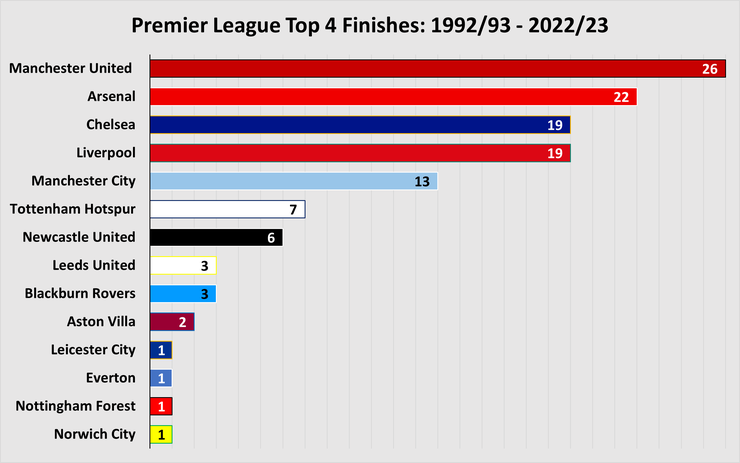
Most Successful Players
In terms of goalscorers, there is one player that stands head and shoulders above the rest, Alan Shearer. Spanning over a 14 year career, Shearer had managed to score an incredible 260 goals in that time from 441 games, working at a goal every 0.59 games. To highlight how impressive his record has been, the next best is Harry Kane, who currently has 213 goals to his name. With Kane still playing at his peak in the Premier League, there’s every chance that he will get near the record in the future.
Only Thierry Henry has a better goal to game ratio than Shearer, with a 0.68, coming from 175 goals in 258 appearances with Arsenal. There have been 34 players who have surpassed the 100 goal mark and 26 players from 12 different clubs have won or shared the Golden Boot trophy, awarded to the highest goalscorer for that season. Erling Haaland has the record for most goals in a Premier League season with 36, ahead of Alan Shearer and Andy Cole with 34 goals apiece. Ryan Giggs holds the record for scoring goals in consecutive seasons, with an impressive tally of 21 years for Manchester United.
Premier League Player Records: 1992/93 – 2022/23
| Most Goals | Most Appearances |
|---|---|
| Alan Shearer (260) | Gareth Barry (653) |
| Harry Kane (213) | Ryan Giggs (632) |
| Wayne Rooney (208) | James Milner (619) |
| Andrew Cole (187) | Frank Lampard (609) |
| Sergio Aguero (184) | David James (572) |
| Frank Lampard (177) | Gary Speed (535) |
| Thierry Henry (175) | Emile Heskey (516) |
| Robbie Fowler (163) | Mark Schwarzer (514) |
| Jermaine Defoe (162) | Jamie Carragher (508) |
| Michael Owen (150) | Phil Neville (505) |
History
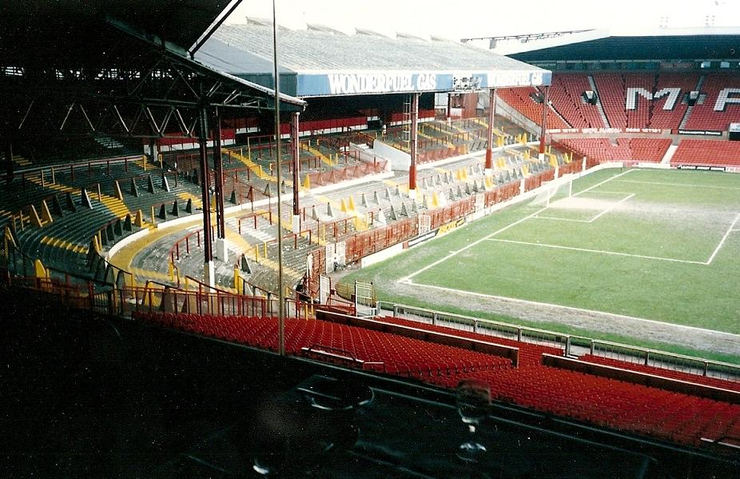
As we’ve mentioned already is this article, the Premier League was first set up in 1992. But, one thing we haven’t really touched on yet is why.
Issues that essentially lead to the foundation of the Premier League started almost a decade before, in the 1980’s. The sport was failing out of love with the beautiful game, with attendances dropping, the state of grounds and pitches deteriorating and the fact that the national team had failed to kick on since their World Cup win in 1966 all fuelled the decline.
The Football League First Division, as the top tier of English football was known back then, was rapidly falling behind that of their European counterparts such as La Liga and Serie A, both in terms of quality and revenue. It was floated at this time that the top teams from within the division were to break away from the Football League in order to form their own league of which they would have greater control. Essentially, this fell through and they were persuaded to stay in the current set up and a basis that would see them get the lion’s share of any TV money that came into the league.
By the early 1990’s the country started to see up-turn in fortune, with the likes of Liverpool and Manchester United both doing well in Europe and even a semi-final appearance for the national team in the 1990 World Cup.
By 1990 the idea of a breakaway league was once again tabled, with London Weekend Television (LWT) director, Greg Dyke, leading the talks. The proposal was to get all five of the top teams within the league – Manchester United, Liverpool, Tottenham, Everton and Arsenal – to all get on board and join the motion.
The idea was to the run the breakaway league (Premier League) as a separate entity to both the Football League and the Football Association. It allowed the Premier League to negotiate its own TV deals and essentially pitch the prospect of showing a larger number of high profile teams on TV, gaining bigger audiences. This was accepted by the five proposed clubs and then both the Football League and the Football Association.
Whilst the idea from the outside seemed like the five named clubs would be getting the best deal, and essentially, they would, the extra money that would work its way through the league would mean that all teams would be significantly better off as a result, rather than being in Football League First Division.
The Premier League were able to negotiate a deal worth in excess of £300 million for the first set of TV rights. But, whilst it was Dyke who had been heavily involved in setting up the league and was hotly tipped to get the TV rights with ITV on board, it was BskyB who eventually came out as winners and have been at the forefront of broadcasting of the league ever since, with BBC getting rights for the highlight package, then coming in the form of Match of the Day.
First Premier League Season (1992/93)

Manchester United were the first winners of the league in 1992/93 season, with a 10 point gap over second place Aston Villa. It was Villa who were the only team to really push United throughout the season, but their hopes faded towards the end with a failure to pick up vital wins at a time when United were pushing home their dominance. United were able to claim the one and only Champions League spot that season, with Aston Villa and Norwich City both earning the final two UEFA Cup spots.
Relegated from the league that season were Crystal Palace, Middlesbrough and Nottingham Forrest. Interestingly, all three teams were relegated with 40+ points, a mark that is often thought of today as benchmark for survival. Although, back then the league did include 22 team, compared to today’s 20 teams, so more points were on offer.
There were two surprises in the league that season, and for very different reasons. The first off was the plight of Leeds United, who finished in 17th place after winning the league the previous year. To this day it’s the worst title defence of any top flight club in English footballing history. The second was that of Wimbledon, who were 3rd off bottom on Boxing Day, to go on a great run of form and eventually finish 12th in the league.
The competitive nature of the league that year was not only highlighted by the fact that Nottingham Forrest finished bottom with 40 points, but also the fact that just 10 points separated 20th (Crystal Palace) and 6th (Liverpool).
Manchester United
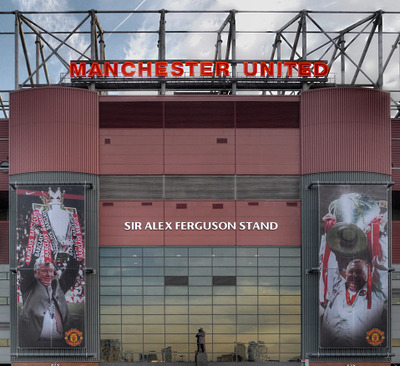
Over the last 30 years or so, Manchester United have won it all, from Premier League titles to the FIFA World Club Cup and everything in between. They have won the most league titles of any club, with 13, making up almost half of the total number of tittles won in Premier League history.
The success that they have seen over the entire Premier League has been unprecedented. No team has really got near them, with Manchester City being the next best in the ranks with six.
One of the backbones to their success has been then appointment of the most decorated manager of all time, Sir Alex Ferguson. Ferguson had taken charge in 1986 coming from Aberdeen after the sacking of Ron Atkinson. Even though he’s won so much, his career at United didn’t get off to the best of starts with an 11th place finish in his opening season following that of a 2nd, another 11th and reportedly on the brink of the sack. Only a victory of Crystal Palace in the FA Cup final replay saved him his job and the rest, as they say, is history.
Ferguson was renowned for being shrewd in the transfer market and has signed some of the leagues greatest players such as Eric Cantona, Peter Schmeichel, Rio Ferdinand, Roy Keane and Cristiano Ronaldo. But, he will always be remembered for bringing through talent within his youth ranks, namely the Class of ’92.
The class of ’92 were made up from the likes of Ryan Giggs, David Beckham, Paul Scholes, Gary Neville, Phil Neville and a couple of others. It was these guys that Ferguson put his upmost trust in and even replaced some huge names at the club with this young blood. It was TV presenter and former Liverpool player, Alan Hansen, who famously said “you can’t win anything with kids” when Ferguson fielded one of the youngest teams in Premier League history, but it was Ferguson and his young team that had the last laugh, wining pretty much everything in club football.
Throughout the years United and Ferguson in particular have been the king of mind games and with it have had some unforgettable title battles. The 2011-12 season where Manchester City pipped them to the title on the last day was a particular favourite for the neutral, but in the 1995-96 season the duel with Newcastle United won’t be forgotten any time soon.
At Christmas, Newcastle, under the management of Kevin Keegan and with the all-time leading scorer in the Premier League, Alan Shearer, leading the line, found themselves 15 points clear at the top of the league, with United in 2nd. But a catastrophic fall from grace for Newcastle led to one of the most famous Premier League quotes of all time from Keegan, ranting to Sky TV cameras with the now infamous “I’d love it…” rant. It was all Fergusons doing and the mind games had gotten the better of Newcastle.
They went on to win just 5 of their remaining 13 games from February onward, handing the title back to United.
Arsenal’s Invincibles
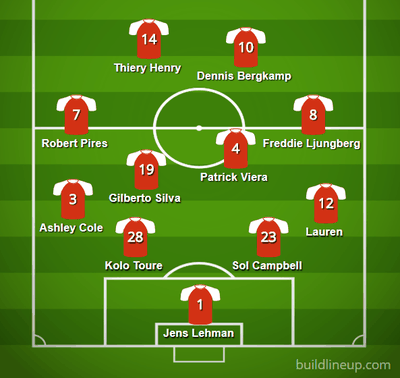
In the 2003-04 season Arsenal managed to do what no team has done before or since in the Premier League, go the whole season unbeaten. They were led by French manager, Arsene Wenger, who made some iconic signings such as Thierry Henry, Patrick Viera, Robert Pires and Emanuel Petit.
The club recorded 26 wins and 12 draws from their 38 games. But in a game against Manchester United at Old Trafford, the run came uncomfortably close to coming to an abrupt end, when United forward Ruud van Nistelrooy missed a last minute penalty which would have won the game for United and broken Arsenal’s pursuit of perfection.
The run actually extended into the next season, going a massive 49 league games unbeaten, before losing 2-0 to Manchester United in another controversial game at Old Trafford.
Roman Abramovich and the Chelsea Revolution

In 2003 Russian businessman Roman Abramovich purchased Chelsea Football Club. At the time, little was known of Abramovich, other than he was a multi-billionaire and was keen to make Chelsea a force to be reckoned with.
It was the first time that the Premier League had seen foreign investment quite on this scale. Abramovich came in and started spending from the off. He wanted to make them as big a brand as the likes of Manchester United and Real Madrid.
In the first season with Abramovich at the helm they managed to finish second in the league, 4 places higher than their previous best finish the year before. In his second season, he signed Jose Mourinho as manager, who only the previous year had won the Champions League with FC Porto, a team that beat Chelsea in the semi-finals.
During the Abramovich era, which ended in 2021, they had their most successful run ever, with 17 major domestic and European trophies in that time. Over the years they have broken many records, including the league’s highest ever points total of 95 points in the 2004-05 season (now surpassed by Liverpool and Manchester City), along with several transfer records as well. But, their highlight has to be their first Champions League victory in 2008, with the club then being managed by Avram Grant. Controversially, Grant was later sacked that summer and replaced by Luis Felipe Scolari.
Leicester City

Leicester City is probably one of the most remarkable stories in Premier League history. In 2015-16 season, they managed to defy the odds and win the league, breaking the trend of one of the ‘Big Four’ winning it over the previous 20 or so years.
But, it wasn’t just that they did it, it was the manner in which they did they did it. In the 2014-15 season Leicester were enjoying their first season back in top flight for over a decade, and even got off to a fairly decent start. But, after 29 matches they had barely added to this good start, with just 19 points to show from 29 games and 7 points adrift from safety with just 9 games remaining.
From those final 9 league games, amazingly they went on to win 7 of them and managed to stay up on the last day. Little did they know that this form would change the history of the Premier League forever.
The following 2015-16 season the club had decided to part ways with the then manager, Nigel Pearson. They appointed the likeable and very successful Italian, Caludio Ranieri, to take charge. The teams form picked up where they left off at the end of the previous season, with their striker, Jamie Vardy, breaking the record for most consecutive games scored in the Premier League with 13 goals from 11 games.
Leicester were top of the League by Christmas and were able to hang on until the end of the season. They were officially crowned champions when second place Tottenham Hotspurs let a 2 goal lead slip away to Chelsea, resulting in a 2-2 draw.
Given the money in the Premier League and the relatively little money that Leicester City had spent, plus the fact they were almost relegated just 12 months previous, this is one of the most iconic moments in Premier league history and will never be forgotten…especially if you’re a Leicester fan!